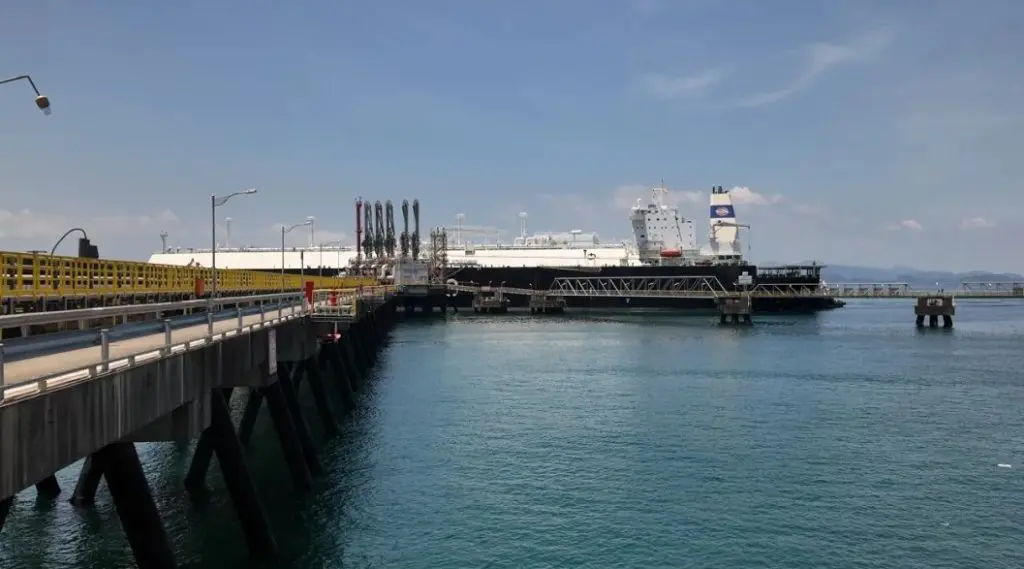This story requires a subscription
This includes a single user license.
In September 2024, global LNG imports increased by 8.9 percent (2.77 Mt) y-o-y to reach 33.75 Mt, Doha-based GECF said in its monthly gas market report.
GECF said the Asia Pacific region led the rise in global LNG imports, offsetting a decline in European LNG imports.
Strong LNG demand in the Asia Pacific region supported the healthy price spread between spot LNG prices in Asia Pacific and Europe, which led to the influx of Asia Pacific’s LNG imports and a drop in European LNG imports.
The Latin America & the Caribbean (LAC) and MENA regions also recorded significant increases in their LNG imports.
From January to September 2024, global LNG imports reached 306.81 Mt, representing an increase of 1.7 percent (5.24 Mt) y-o-y.
GECF said this increase was driven mainly by the Asia Pacific region, which offset a decline in Europe.
European LNG imports down for 15th consecutive month
In September 2024, Europe’s LNG imports declined for the 15th consecutive month, falling by 15 percent (1.10 Mt) y-o-y to 6.42 Mt.
GECF said this decrease was due to increased pipeline gas imports from Norway, high gas inventories, and a significant NEA spot LNG-TTF price spread.
The decline was driven by Belgium, France, the Netherlands, and Spain, while the UK saw an increase.
In Belgium and the Netherlands, the decline in LNG imports was driven by increased pipeline gas imports from Norway and the UK, along with high gas storage levels, GECF said.
Weaker gas consumption in the Netherlands further contributed to the drop.
In France, despite rising gas consumption, higher pipeline imports from Norway and ample inventories reduced LNG imports, according to GECF.
Spain’s decline in LNG imports resulted from lower gas consumption.
In Poland, stronger pipeline gas imports weakened LNG demand.
Meanwhile, the UK’s LNG imports increased due to higher gas consumption, reduced domestic gas production, and rising pipeline gas exports to mainland Europe, GECF said.
Between January and September 2024, Europe’s LNG imports dropped by 20 percent (18.29 Mt) y-o-y, totaling 73.77 Mt.
Asia Pacific LNG imports surge
According to GECF, Asia Pacific’s LNG imports surged by 14 percent (3.02 Mt) y-o-y in September, reaching 24.30 Mt—its third-highest monthly total ever.
This growth was driven by stronger gas consumption, pre-winter LNG restocking, and the significant NEA spot LNG-TTF price spread.
GECF said China, Indonesia, Japan, Malaysia, South Korea, and Taiwan led the increase, offsetting a decline in Thailand.
China’s increased LNG imports were attributed to higher gas consumption and pre-winter restocking, while Indonesia’s LNG intra-country boosted its imports.
Japan and South Korea ramped up imports ahead of winter, as LNG storage levels in August 2024 were lower compared to the previous year, GECF said.
Malaysia’s increase was supported by higher LNG imports from the US, and Taiwan saw stronger imports due to rising gas consumption.
In contrast, Thailand’s higher hydro output during the monsoon season likely reduced its LNG imports, GECF said.
From January to September 2024, LNG imports in the Asia Pacific’s region jumped by 9.8 percent (18.91 Mt) y-o-y to 211.54 Mt, GECF said.
Latin America and MENA
In September 2024, LNG imports in the LAC region reached 1.36 Mt, marking a 22 percent (0.24 Mt) y-o-y increase, according to GECF.
Brazil led this growth in LNG imports, offsetting weaker imports from Chile.
GECF said Brazil’s LNG imports hit their highest monthly level since January 2022, driven by lower hydro output during one of its worst droughts on record, which increased reliance on gas-fired power plants.
In contrast, Chile’s LNG imports declined, likely due to lower gas consumption in the electricity sector as renewable energy output increased, GECF said.
Between January and September 2024, the region’s LNG imports rose significantly by 15 percent
(1.50 Mt) y-o-y, totaling 11.34 Mt.
Moreover, GECF said LNG imports in the MENA region surged by 49 percent (0.49 Mt) y-o-y, reaching 1.48 Mt, the highest level for the month since 2017.
GECF said Egypt was the primary driver of this growth.
The rise in Egypt’s LNG imports was largely due to lower domestic gas production.
From January to September 2024, the region’s LNG imports increased by 46 percent (2.77 Mt) y-o-y, totaling 8.83 Mt, GECF said.
LNG exports up 3.3 percent
GECF said that global LNG exports reached 33.95 Mt, marking a 3.3 percent (1.08 Mt) y-o-y
increase.
For the second consecutive month, GECF member countries contributed the most to this rise, followed by non-GECF countries, while LNG re-exports decreased, it said.
GECF’s share of global LNG exports grew from 47.4 percent from a year earlier to 49 percent, while the shares of non-GECF countries and LNG re-exports declined from 51 percent and 1.6 percent to 50.5 percent and 0.5 percent respectively.
In September 2024, the US, Qatar, and Australia were the top three LNG exporters globally.
Between January and September 2024, global LNG exports grew by 1.6 percent (4.73 Mt) y-o-y, totaling 307.42 Mt, with higher exports from both GECF and non-GECF nations, GECF said.

